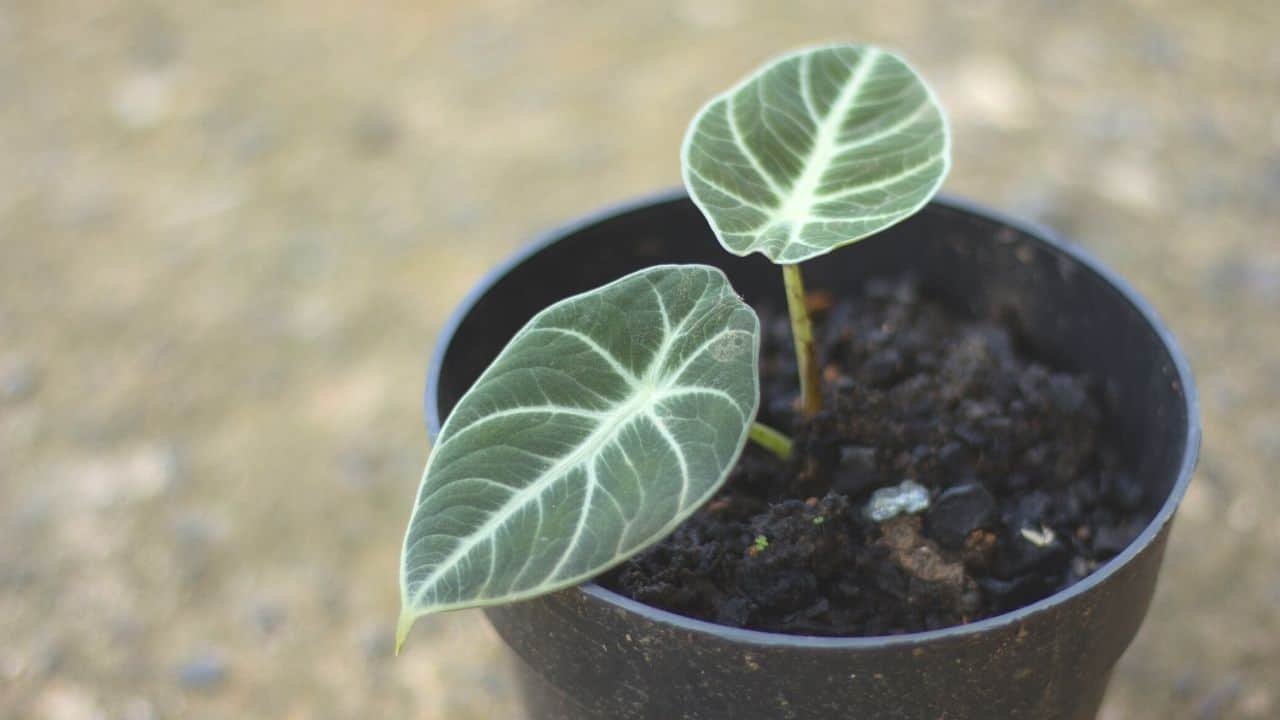The Alocasia Black Velvet is a stunning houseplant prized for its lush dark foliage. However these tropical beauties are prone to infestations of spider mites – a common houseplant pest. If left unchecked, these tiny arachnids can cause significant damage. But with vigilance and prompt treatment, you can defend your Black Velvets.
What are Spider Mites?
Spider mites are minuscule 8-legged pests related to spiders and ticks. There are many species, with the two-spotted spider mite being most prevalent indoors. Adults reach only 1/50 inch long, making them very hard to see. They thrive in hot, dry conditions and feed on plant fluids.
Why Alocasia Black Velvet is Susceptible
With their tropical origins, Alocasia prefer warm, humid conditions. Their large, luscious leaves provide ample feeding sites. And their sap is a tasty treat for hungry spider mites. This makes them a prime target.
Signs of Infestation
Catching spider mites early is key. Signs include:
- Fine webbing on leaves
- Stippling damage that appears as tiny dots
- Yellowing or browning of leaves
- Drooping foliage
- Leaf drop
Inspect regularly, especially leaf undersides for early detection. Use a magnifying glass to spot the mites themselves.
Dangers of Spider Mites
If left unchecked, spider mites can seriously weaken and damage Alocasia Black Velvet. As they feed, they remove chlorophyll and moisture. This leads to leaf stippling, discoloration, and drop. Their feeding also makes plants more prone to diseases. And their webs allow mold growth. Extensive infestations can even kill the plant. Acting quickly is essential.
Preventing Spider Mites
While not foolproof, you can take steps to avoid spider mites:
- Provide consistent humidity around 60%
- Allow soil to dry out between waterings
- Keep leaves dust-free by wiping regularly
- Isolate new plants before introducing them
- Avoid crowding plants together
Adjust conditions to make your Alocasia less hospitable to these pests.
Treating Spider Mite Infestations
If spider mites attack, taking swift action is key. Effective organic remedies include:
Insecticidal Soap
Insecticidal soaps containing fatty acids disrupt mite membranes on contact, killing them. Spray leaves liberally, especially undersides, repeating every 3-5 days.
Neem Oil
Neem oil is a natural pesticide that disrupts the mite life cycle. It kills eggs and adults while deterring feeding and reproduction. Apply as a foliar spray.
Horticultural Oils
Light oils like neem smother mites and eggs by blocking their respiratory systems. Coat leaves thoroughly.
Manual Removal
For small infestations, manually remove visible webbing and mites using cotton swabs dipped in soapy water or alcohol. Check daily.
Environmental Changes
Adjust humidity, ventilation, watering schedules and lighting to make conditions less favorable for mites.
Be vigilant with monitoring and treat early. With persistence, you can conquer these tiny pests. Your lush Black Velvet will thank you!
Optimal Growing Conditions
Lighting is the lifeblood of your plant. Too little, and youre inviting a sad, droopy existence; too much, and youre basically throwing a pest party. Watering is a balancing act—overdo it, and youre setting the stage for an insect rave.
Adults: The Reproducers
Adult pests are the culprits behind reproduction. Stopping them means halting the spread. Regular inspections are your best defense, catching these troublemakers before they turn your Alocasia into a nursery.
Effective pest management hinges on breaking this cycle. Its not just about the one-off kill; its about strategic strikes at the most vulnerable life stages. Its a war of attrition, and knowledge is your most potent weapon.
Get rid of spider mites! #houseplants #plantlove #plants #plantcare #planthelp #alocasia #pests
FAQ
How do you get rid of spider mites on Alocasia?
Can a plant recover from spider mites?
What are the pests in black velvet Alocasia?
What plants are most prone to spider mites?
- The Ultimate Guide to Growing Strawberries in Raised Beds - August 8, 2025
- No-Dig Garden Beds: The Easiest Way to Grow a Beautiful Garden - August 6, 2025
- How to Protect and Preserve Wood for Raised Garden Beds - August 6, 2025


